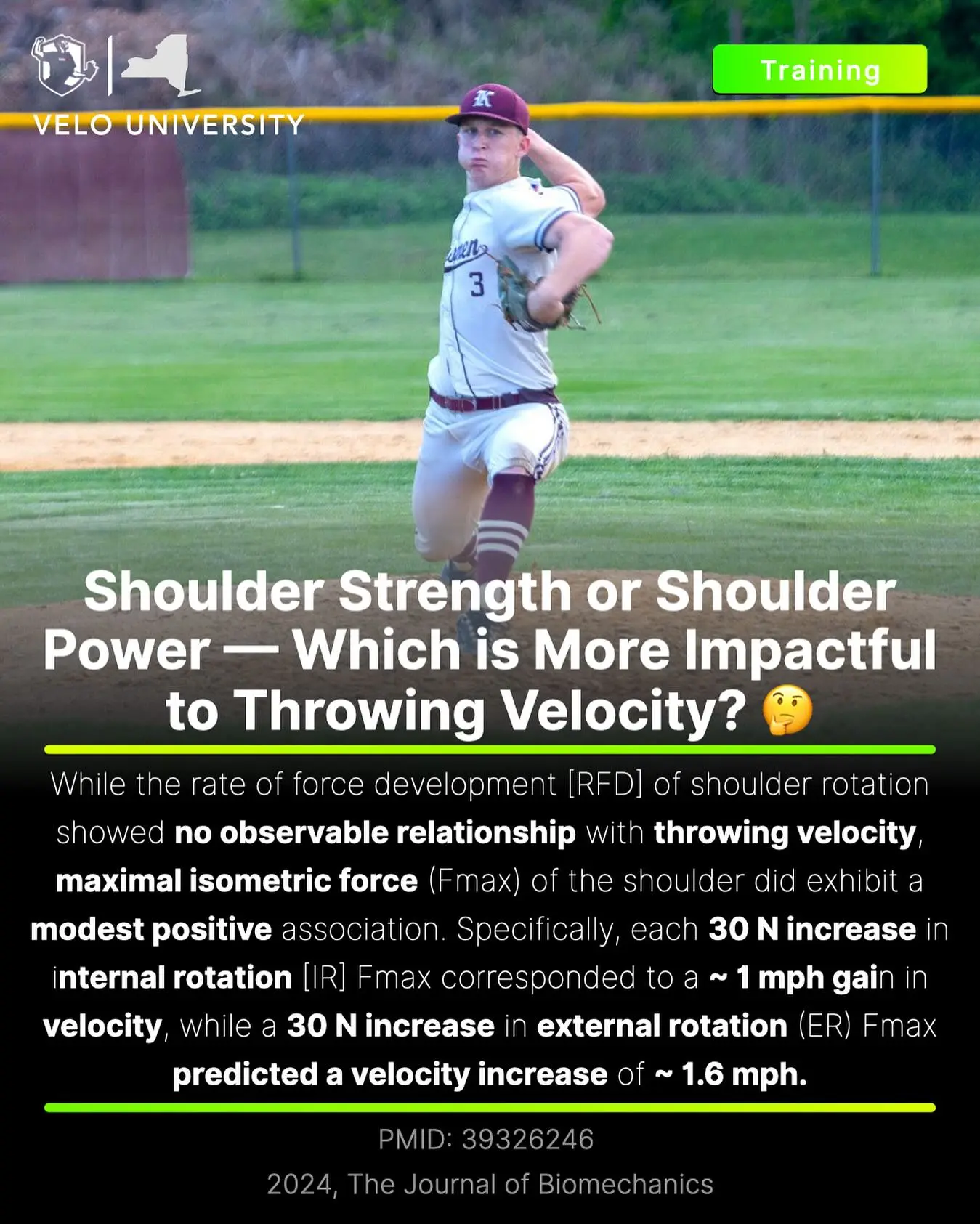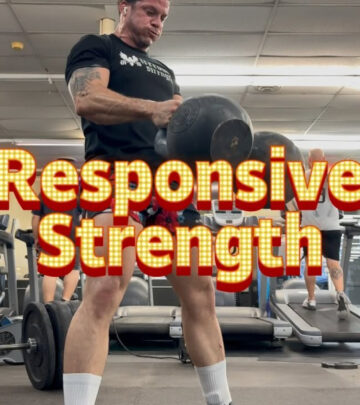Shoulder Rotator Strength Impacts Pitching Velocity
Stronger shoulder rotators yield small gains with vital velocity boosts for young pitchers.

Image: Instagram
A recent 2024 study has thrown new light on the role of shoulder rotator strength in achieving higher throwing velocities among high school and collegiate pitchers. The research revealed that despite differences in age and forearm length, both groups attained nearly identical ball speeds of 36.3 m/s and 36.4 m/s, respectively. The findings underscore that while building shoulder strength may only deliver incremental improvements, even small gains can be crucial in competitive play.
Study Overview And Key Findings
The study examined two primary aspects of shoulder function: maximal force generation and the rate at which that force is developed. Researchers found that increases in peak force from internal (IR) and external rotation (ER) of the shoulder were modestly linked to throwing velocity. Specifically, every 30 N increase in strength was associated with a velocity boost of approximately 0.5–0.7 m/s (or roughly 1–1.5 mph). Importantly, the rate of force development (RFD)—a measure of how quickly force is generated—showed no meaningful relationship with throwing velocity and was consequently excluded from the predictive models. In addition, the study revealed a strong positive correlation between IR and ER strength (with correlation coefficients ranging from 0.63 to 0.71), suggesting that pitchers with robust accelerating muscles tend to also have equally strong decelerators.
Biomechanical Insights And Training Implications
The implications of these findings are nuanced. While the study confirms that enhanced maximal rotational force can do little more than provide incremental speed gains, it also indicates that muscle explosiveness measured under static, isometric conditions may not fully capture the demands of the dynamic throwing motion. This raises questions about the adequacy of traditional strength tests in predicting on-field performance. Nonetheless, the modest benefits—a gain of about 1 to 1.6 mph per 30 N increase in strength—can prove critical in high-stakes environments where every fraction of a mile per hour counts.
Dr. Nicholas Serio, a renowned baseball performance expert and coach, has long advocated for the importance of building a balanced shoulder profile. His recent posts, which highlight the complexities of biomechanical sequencing in pitching, echo the study’s sentiment that shoulder strength should be seen as a foundational element rather than the sole performance determinant. As he has noted in prior discussions, effective pitching involves precise timing, coordinated trunk rotation, and the seamless transfer of energy through the kinetic chain. The study’s data support this broader perspective by illustrating that while increased peak force in both internal and external rotation can contribute to velocity, the complete picture of performance also depends on several interconnected factors.
Implications For Young Pitchers
For coaches and developing athletes, the takeaway is clear: targeted strength training to boost shoulder rotator force can yield measurable performance improvements, albeit with modest gains. This does not diminish the importance of explosive work or precision in mechanics. Instead, it emphasizes the strategy of treating strength gains as one lever in an integrated training regimen. The study’s findings serve as a reminder that optimizing performance is a balancing act—strength training must be complemented by drills that enhance timing, sequencing, and overall kinetic efficiency.
Moreover, the research provides valuable insight for athletic trainers focused on injury prevention. Strength work is not solely about achieving higher velocities; it also plays a crucial role in building resilience and reducing the risk of overuse injuries. In the competitive realm of high school and collegiate baseball, where minute differences can determine game outcomes, even the smallest enhancements in speed and stability may offer young pitchers a significant edge.
As the broader baseball community continues to evaluate performance variables, this study reinforces the idea that the mechanics of the pitch extend well beyond raw velocity. The absence of a link between RFD and throwing speed under static conditions suggests that dynamic in-game factors and motor coordination are just as critical. For aspiring pitchers and their coaches, it becomes essential to look beyond traditional strength metrics and adopt a more holistic approach to training.
In sum, while the improvements from increased shoulder force are modest, they can still be game-changing when integrated into a comprehensive training program. With continual advancements in sports science, studies like this pave the way for refined, evidence-based coaching strategies that focus on improving both performance and durability on the mound.
Read full bio of Vidya Tadapatri
























